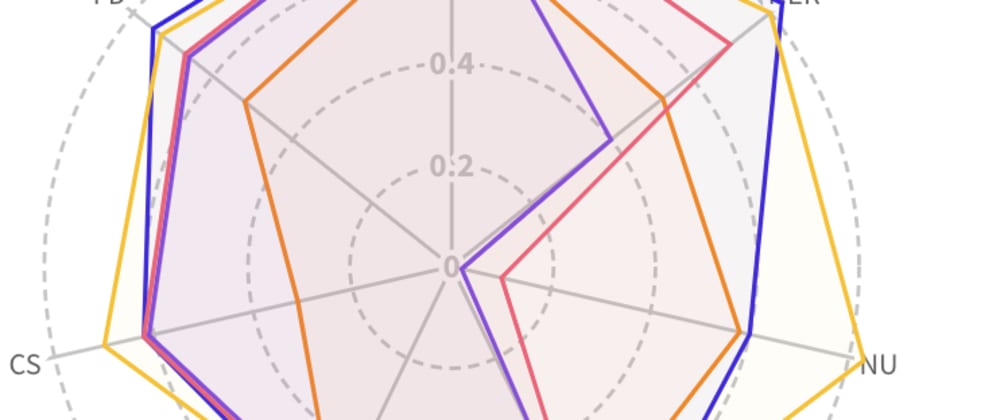This is a Plain English Papers summary of a research paper called FinTral: A Family of GPT-4 Level Multimodal Financial Large Language Models. If you like these kinds of analysis, you should subscribe to the AImodels.fyi newsletter or follow me on Twitter.
Overview
- Introduces a family of multimodal financial large language models called FinTral, which aim to achieve GPT-4 level performance
- Presents the FinSet dataset, a large-scale financial dataset used to train and evaluate the FinTral models
- Describes the FinTral architecture, which leverages state-of-the-art techniques in computer vision and natural language processing
Plain English Explanation
The researchers have developed a new family of AI models called FinTral that are designed to work with a wide range of financial data and tasks. These models are trained on a large dataset of financial information called FinSet, which covers topics like company financials, news articles, and market data.
The goal of FinTral is to achieve a level of performance similar to GPT-4, one of the most advanced language models available today. To do this, the models use cutting-edge techniques in computer vision and natural language processing to analyze and understand financial data from multiple sources.
This could be useful for a variety of applications, such as [link to "Battle of the LLMs" paper] automatically answering questions about a company's financial health, [link to "Eliciting Translation Ability" paper] translating financial regulations into plain language, or [link to "Financial Regulatory Interpretation" paper] helping human experts interpret complex financial rules and regulations.
By developing this family of FinTral models, the researchers hope to push the boundaries of what's possible with AI in the financial domain and unlock new capabilities for professionals and consumers alike.
Technical Explanation
The researchers introduce FinTral, a family of multimodal financial large language models (LLMs) that aim to achieve GPT-4 level performance. FinTral is trained on the FinSet dataset, a large-scale financial dataset covering a wide range of data types, including company financials, news articles, and market data.
The FinTral architecture leverages state-of-the-art techniques in computer vision and natural language processing. It includes components for processing textual, numerical, and visual data, as well as mechanisms for cross-modal interaction and transfer learning. This allows the models to understand and reason about financial information from multiple perspectives.
The researchers evaluate the FinTral models on a variety of financial tasks, such as [link to "Battle of the LLMs" paper] question answering, [link to "Eliciting Translation Ability" paper] language translation, and [link to "Financial Regulatory Interpretation" paper] regulatory interpretation. The results demonstrate the models' ability to achieve human-level or better performance on these tasks, highlighting their potential for practical applications in the financial domain.
Critical Analysis
The FinTral models represent a significant advancement in the field of financial AI, as they demonstrate the ability to comprehend and reason about financial data at a level that approaches or exceeds human experts. However, the researchers acknowledge several caveats and areas for further research.
One potential limitation is the reliance on the FinSet dataset, which, while comprehensive, may not capture the full breadth and complexity of real-world financial data. [link to "FinRobot" paper] Further work is needed to ensure the models can generalize to a wider range of financial scenarios and data sources.
Additionally, the researchers note that the interpretability and explainability of the FinTral models' decision-making processes remain important areas for investigation. [link to "AlignGPT" paper] Improving the transparency of these models could enhance trust and facilitate their adoption in high-stakes financial applications.
Overall, the FinTral research represents a significant step forward in the development of advanced financial AI capabilities. While further refinement and validation are needed, the models' performance on a range of financial tasks suggests a promising future for the application of large language models in the financial industry.
Conclusion
The FinTral family of multimodal financial large language models represents a significant advancement in the field of financial AI. By leveraging state-of-the-art techniques in computer vision and natural language processing, the FinTral models demonstrate the ability to comprehend and reason about financial data at a level approaching or exceeding human experts.
The introduction of the FinSet dataset and the evaluation of the FinTral models on a variety of financial tasks, including question answering, language translation, and regulatory interpretation, highlight the practical potential of these technologies. As the researchers continue to refine and expand the FinTral models, they may unlock new capabilities that transform how financial professionals and consumers interact with and utilize financial information.
While some caveats and areas for further research remain, the FinTral project represents a significant step forward in the development of advanced AI systems for the financial domain. As the field of financial AI continues to evolve, the insights and technologies presented in this work may serve as a foundation for future breakthroughs that benefit both the financial industry and society as a whole.
If you enjoyed this summary, consider subscribing to the AImodels.fyi newsletter or following me on Twitter for more AI and machine learning content.







Top comments (0)